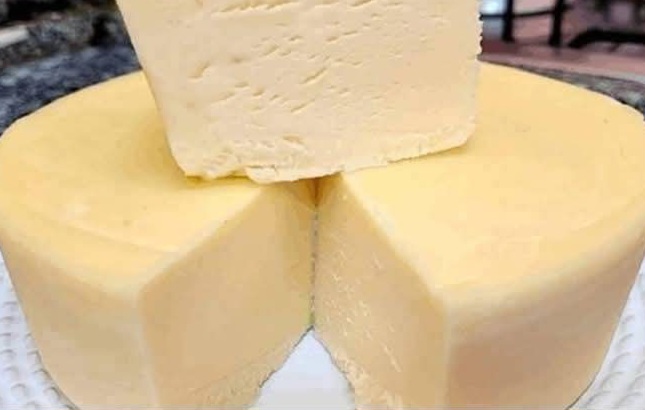Introduction
Homemade cheese using milk and vinegar is a simple yet delightful way to bring traditional dairy crafting into your kitchen. It’s quick, inexpensive, and surprisingly rewarding, perfect for anyone seeking fresh, preservative-free cheese.
—
Origin and Cultural Significance
The practice of curdling milk with acidic agents like vinegar or lemon juice dates back centuries, with roots in many cultures including Indian paneer, Italian ricotta, and Middle Eastern labneh. These cheeses were staples in agrarian societies, allowing milk to be preserved without refrigeration and enjoyed in multiple culinary forms.
—
Ingredients Quantity
For this homemade cheese:
Milk: 1.5 liters (6 1/3 cups) – whole milk is best for creaminess
Salt: to taste – typically 1/2 to 1 teaspoon
Apple cider vinegar: 2 tablespoons (30 ml)
Melted butter: 50 grams (1/4 cup) – for richness and a smoother texture
—
Optional Additions
You can personalize your cheese by adding:
Herbs: chives, dill, parsley
Spices: garlic powder, paprika, black pepper
Chilies or olives: for a Mediterranean twist
Lemon juice (as a substitute for vinegar) for a citrusy flavor
—
Tips for Success
Use fresh, full-fat milk (avoid ultra-pasteurized).
Heat milk slowly and evenly to avoid scorching.
Stir gently after adding vinegar to ensure even curdling.
Drain well but avoid over-pressing for a creamy texture.
Chill the cheese for firmer results before slicing.
—
Instructions
1. Heat the milk in a large saucepan over medium heat until it reaches around 85°C (185°F), just before boiling.
2. Add vinegar gradually while stirring gently until curds begin to form and separate from the whey.
3. Let rest for 10 minutes.
4. Strain through a cheesecloth or fine mesh to separate curds.
5. Season with salt to taste and mix in melted butter for a smooth finish.
6. Mold and press the cheese slightly if a firmer texture is desired.
7. Refrigerate for at least an hour before serving.
—
Description
The resulting cheese is creamy, mild, and spreadable or sliceable depending on how much whey is drained. It has a fresh dairy flavor and a silky texture enriched by the butter.
—
Nutritional Information (Approximate per 100g serving):
Calories: 240 kcal
Protein: 10 g
Fat: 20 g
Carbohydrates: 2 g
Calcium: 200 mg
Sodium: Varies by salt added
—
Conclusion
This simple homemade cheese is not only delicious and cost-effective but also a fun introduction to cheese-making. Its adaptability allows you to tailor flavor and texture to your preferences.
—
Recommendation
Serve your cheese on toast, crumble it into salads, or enjoy it with fruit and nuts as a healthy snack. It’s an ideal project for families, food enthusiasts, and anyone curious about natural, preservative-free foods.
—
Embracing Healthful Indulgence
Crafting your own cheese connects you with traditional food roots and offers control over ingredients, empowering a healthier lifestyle. It’s a small, satisfying indulgence that supports mindful eating and creativity in the kitchen.
